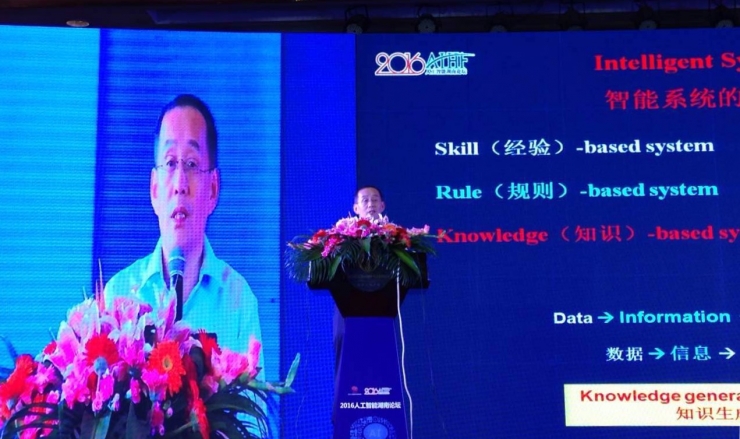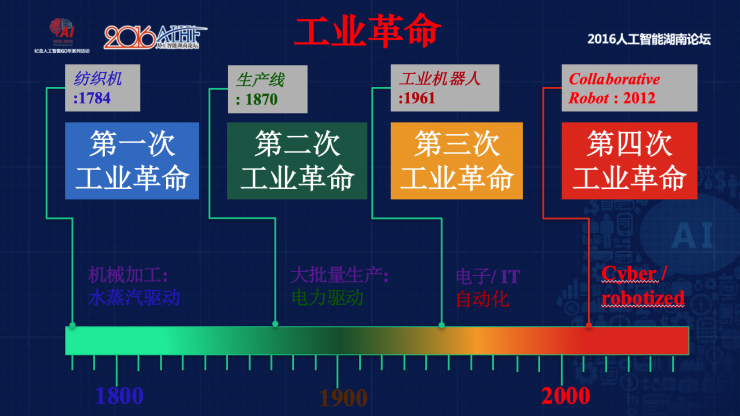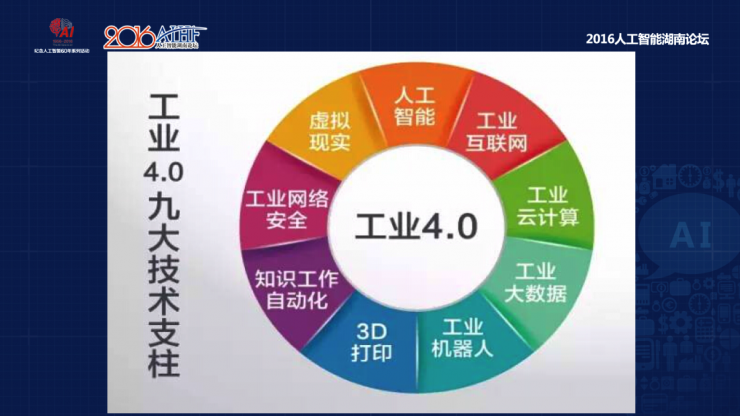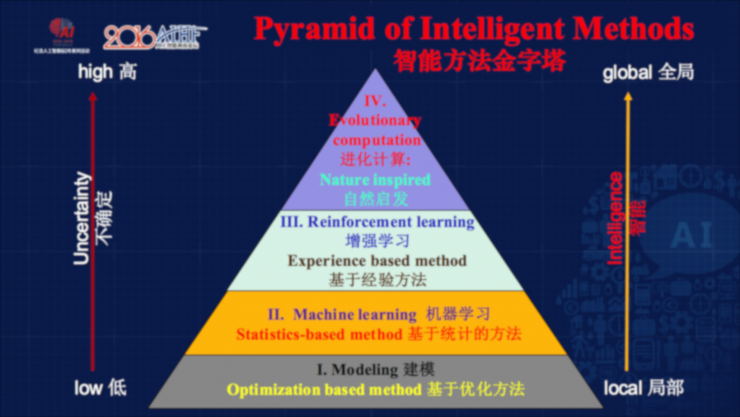Lei Fengnet (search for "Lei Feng Net" public concern) by: Li Hanxiong, Ph.D., Department of System Engineering and Engineering Management, City University of Hong Kong, and Professor of Central South University. He was successively elected to the National Outstanding Youth Fund (Overseas) winner (2004), the Ministry of Education Yangtze River Scholar (2006), the National “Thousand Person Plan†expert (2010) and IEEE Fellow (2010). He has served as the deputy chief editor of IEEE Transactions on Cybernetics (2002 - present) and IEEE Transactions on Industrial Electronics (2009 - 2015) for a long period of time and editorial board members for several core publications in China. 2 monographs in English for publishing system modeling and system design; more than 180 SCI papers published in international authoritative academic journals. For two consecutive years (2014, 2015), he was rated as China's high-cited scholar by Elsevier, an international authoritative publisher. For more than two decades, he has been engaged in research on smart manufacturing, focusing on intelligent modeling, design and control of industrial processes, and intelligent decision-making based on data learning.
 Professor Li Hanxiong gave a speech at the conference
Professor Li Hanxiong gave a speech at the conference
Today, at the “2016 Artificial Intelligence Hunan Forum†commemorating the 60-year series of artificial intelligence events held in Changsha, Hunan, the first heavyweight guest Professor Li Hanxiong shared the “control and intelligence in intelligent manufacturing†from the perspective of scholars. The role of ".
Intelligent manufacturing is to achieve full automation from customer demand to production, which puts high demands on the future control system. The entire industrial manufacturing chain covers a wide range of production equipment and processes: from a single mechanical action to a number of nested operations, and even to complex production scheduling management, there are complex characteristics of multivariable coupling and multi-scale. Need to carry out different manipulations on the specific characteristics of the process, including system design, process modeling and control, data learning and decision making.
For multi-scale complexity, the implementation of smart manufacturing requires a 5-layer pyramid structure:
Hardware sensing
Data-information conversion
Multi-model fusion
Self-awareness
Autonomous decision
By intelligently integrating multiple methods, the uncertainty is eliminated layer by layer, and system intelligence is increased; the gradual evolution from product intelligence to production intelligence is realized, and finally the full automation and intelligence of industrial manufacturing are improved.
Industry 4.0First of all, Professor Li Hanxiong mentioned that human society has so far experienced four industrial revolutions. The first industrial revolution originated from water-steam-driven textile machines. The second and third industrial revolutions relied mainly on electricity-driven production lines. The industrial robots that emerged afterwards, until the recently proposed fourth industrial revolution, plan to carry out industrial upgrading through collaborative robots.

Therefore, from this perspective, not only can all communication equipment be connected together, but it can also greatly reduce production costs. From another point of view, Industry 4.0 can be regarded as CP+, which is a large physical system, which means that it is necessary to realize intelligent manufacturing through the Internet according to the needs of the market, and ultimately achieve full automation of production.
The traditional practice is generally started from the market demand, from raw materials to products, and then to the machine. Now that the intermediate process is fully automated through intelligentization, the quality, efficiency, and agility of manufacturing can be greatly improved. This approach can extend all aspects of industrial production, including future manufacturing, networked energy, smart infrastructure, and medical IT. In general, Industry 4.0 has nine major technical pillar industries, including artificial intelligence, industrial internet, and other pillar industries.

Manufacturing is a multi-scale and complex system. If we generally use system engineering to solve it, we need to decompose the manufacturing system, solve the distribution, and finally synthesize it. Because this depends on people's thinking, our thinking in solving problems is to simplify complex issues and all complex calculations are to be added, subtracted, multiplied and divided. This is the basic modernization theory.
I give an example of manufacturing, that is, the electronic packaging industry. This is a very complex production line, from the patch to the packaging, which consists of many system processes. The patching process is divided into three steps. The first is the chip's capture, the second is the main point, and the third is the structure. These three simple actions are multi-level nested, and the scale is not the same, and is a measure of multiple time and space-time.
Another example, the most commonly used dispenser, this is my project this year. This is a problem of multiple time scales. From this point of view, there is a quick time scale, and then there can be a lot of glue drops at the focus level. Well, because the consistency of industrial manufacturing is good, this is again a question of multiple time scales. This is a very common phenomenon in manufacturing. It is not only dispensers, but many other manufacturers. Multiple parts are produced from a single part, but because the final performance is difficult to detect and there is a lot of uncertainty, human intervention is often required. The other is the control of the temperature plant. When a chip passes through a point, the temperature must be consistent, and thus a relationship of time and space is formed.
Multi-scale and uncertaintyIn general, from the perspective of the entire manufacturing industry, manufacturing has multi-scale characteristics; from the bottom of the equipment, it is a fast process, followed by a slow batch process. There is uncertainty in the logic control of the production level. The higher the supervision level, the more intelligent it needs to be. In other words, the underlying certainty is relatively high, the complexity is relatively low, and the corresponding complexity is higher and higher at the top level. The lower-level manufacturing controls are more concerned with product quality, while the above-mentioned manufacturing controls are more concerned with the profits of the commercial market. This applies mainly to the enterprise management level.
If we compare the bottom-level machine level with the top-level factory level, we will find that its characteristics are not the same. Machine level is a local feature, and factory level is a global feature. Uncertainty is critical, the smaller the uncertainty below it, the greater the uncertainty above it, which is driven by the underlying physics, so dynamic control is needed.
The bottom is the physical connection. The sensor must observe many things. This company can do it. From data to information conversion, companies can use a lot of ready-made algorithms. Further up, companies are more difficult to achieve, and generally only colleges and universities have the ability to convert between systems and calculations and between models. The higher is the cognitive level, which requires people and machines to interact. Realizing the top level without manual intervention Full automation may require the future world.
Smart Manufacturing ChallengeTherefore, the challenges of smart manufacturing are uncertain from an academic point of view. Due to the complexity and diversity of enterprises and manufacturing industries, they cannot be standardized. Therefore, how smart should be intelligent perception, intelligent control, and intelligent decision-making is our Should be considered.
Any industrial project has a dynamic system. For the traditional approach of the dynamic system to intervene, and then eliminate the uncertainty and control, I believe that the company believes that the control is not a problem, think that it is a design problem, any process can be designed, but do not forget In the case of small uncertainties, in the case of large uncertainties, there is no way to obtain the main equations of the system. Therefore, in terms of the correspondence between modern life systems and physical systems, the main body of the equations will not be available, and we will need to learn. Method to get the model of the controlled object. Because of the uncertainty, it is not possible to do control but to make decisions. The left side is less certainty and the right side is more deterministic.
The most basic tasks in smart manufacturing are sensing, modeling, and learning. The greater the greater the uncertainty, the more we go from design to control to management. Sensing wave and learning is the ultimate goal to eliminate uncertainty. Our world is uncertain. The most common uncertainty is randomness. As we all know, there is another kind of ambiguity. The academic world is called ambiguity because information is incomplete and one is random. The magnitude is inaccurate.
In my research process, there are numerical uncertainty, random uncertainty, and spatial uncertainty. When the main equation is lost, it is ultimately determined in a random form and distribution, which is random uncertainty. Therefore, the control is not the same on the different levels of intelligence requirements and functions, the most basic layer is the design of the process, as well as the underlying loop control, these two integration is a great challenge. Because it is necessary to rationally allocate the workload, the design system should be easy to control, so that the designed algorithm is relatively easy to implement. If the two layers cannot be solved, it needs to be supervised to solve it. The automation of knowledge now proposed by the information science is actually in this area.
Modeling is very important, and depending on the goals, the model will be different. When we do industrial design, we need these three platforms. One is the physical process of dispensing. There must be experimental equipment to be able to take the equipment. The second is the industrial physical textile model. We may not know the equation, but there will be a standard process. We will find this equation map. Third, the physical textile model is to be marked, and the final control and design form a fixed process. It is very difficult to calibrate the virtual space and physical space. All three modules and stages must be done.
Manufacturing intelligence is mainly to solve the problem of uncertainty. Artificial intelligence is a method and tool, but it is not a single one. A single method can't solve the problem. Just like repairing a car, it can't repair a car with a single thing. And unlike control, artificial intelligence is walking in front of the theory of the application, control is the theory in front of the application, and the artificial intelligence is agility rather than precision, because the higher the accuracy of intelligence is poorer, see our The robot will know.
First of all, artificial intelligence systems are an experience level, just like driving a car. The hardest level is the judgment of uncertainty. This is a challenge for the future. Because we have never seen it before, we must think.
Where does the smart come from?It is said that humans can only perceive 10% of the world’s information because information is flying all over the place. Perception allows us to obtain information and make logical decisions before acting. Through decision-making, we will make many decisions, but the decision may not be correct. The manufacturing system should also judge the adaptability of the machine itself, and nowadays, self-adaptation has been realized through a large number of operations. Can artificial intelligence replace humans as a result? Personally, I personally think that artificial intelligence can help people solve many problems, but they do not agree with the idea of ​​eventually replacing humans, because people still have a sixth sense.
All the optimization algorithms have four major categories:
One is modeling, and the uncertainty is relatively small. We can use traditional optimization or many algorithms.
The second is machine learning, mainly based on statistical methods.
The third is to enhance learning and use it for cases where the uncertainty is so large that it cannot be processed in a statistical way.
The fourth is evolutionary calculations.

Each of the commonly used algorithms has its own characteristics. The more accurate the underlying algorithm is, the more inaccurate the above algorithm is. When using this algorithm, it is often necessary to combine them. The so-called upper layer algorithm must rely on the following practices. Very complicated decisions still require people to do it. Therefore, when artificial intelligence faces real problems, it must be designed according to the characteristics of the series of problems. This is a great challenge. We need to turn the problem into a computer problem because people are very different from computers.
With the data, we need to extract knowledge. Then there are only two models. One is the data model. Then the machine can control it. If it is determined, it can be controlled. There is another kind of uncertainty. It is the language rule, which is vague. , then for decision-making, data information all have to go through data learning to do, for example, information regression, many functions, including deep learning is also a kind of application network learning, which is directly from the data into information.
The lowest level of control is the design, and the highest level is the logic control, which is the decision-making judgment. The person can make the decision, because the uncertainty has random uncertainty and fuzzy uncertainty. If knowledge is very vague, all knowledge determines two uncertainties.
For example, the City University of Hong Kong is a good university. This information is very vague. How confident is it when speaking this sentence? This is random, we can deal with it, but it is more difficult for the machine. Because the current fuzzy system is regular, it is difficult to extract accurate information, there is a fuzzy memory reasoning and anti-fuzzification knowledge expression, but can not deal with random excessive things. Therefore, our work is to increase the third-dimensional random information and establish a three-dimensional logical relationship.
Intelligent manufacturing system is a multi-scale problem, so intelligent manufacturing is a multi-scale cluster integrating various disciplines. At present, none of the professors' research can cover all areas of smart manufacturing on a global scale and can only focus on one aspect. An inappropriate example is that if the industry is a car repair, the professor is a research tool, and the business community is a production tool. The professors' task is to provide more tools as far as possible.
Recommended reading:
Stanford Professor Zhang Shouyi Talks about Artificial Intelligence and Future
Pin Header Connector,Pin Header Female,Male Header Pins,Right Angle Pin Header
Cixi Xinke Electronic Technology Co., Ltd. , https://www.cxxinke.com